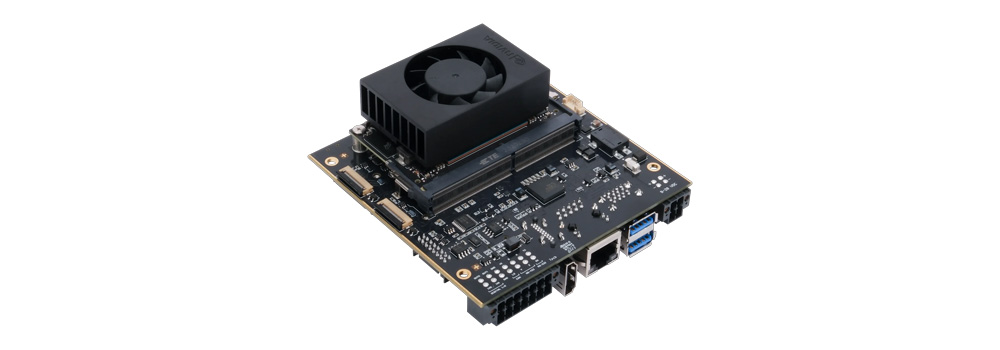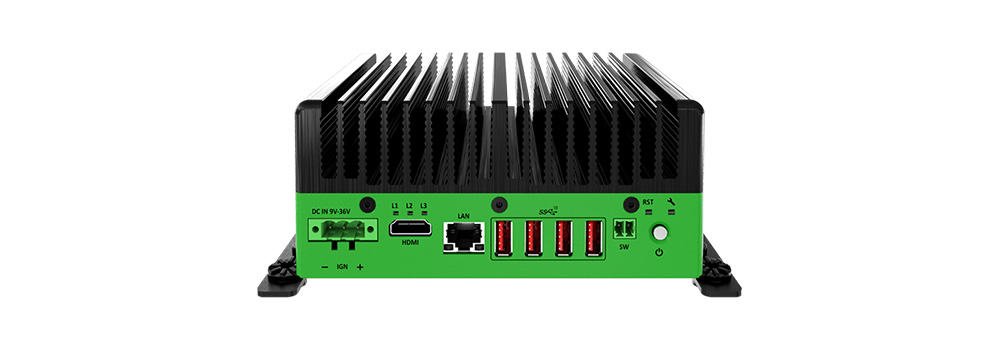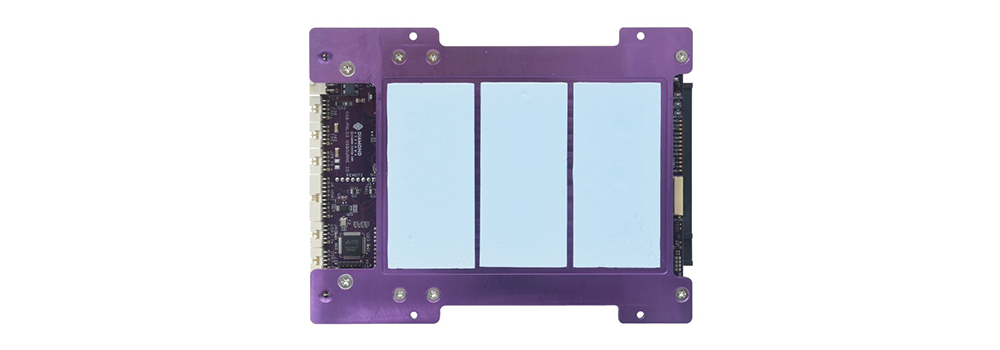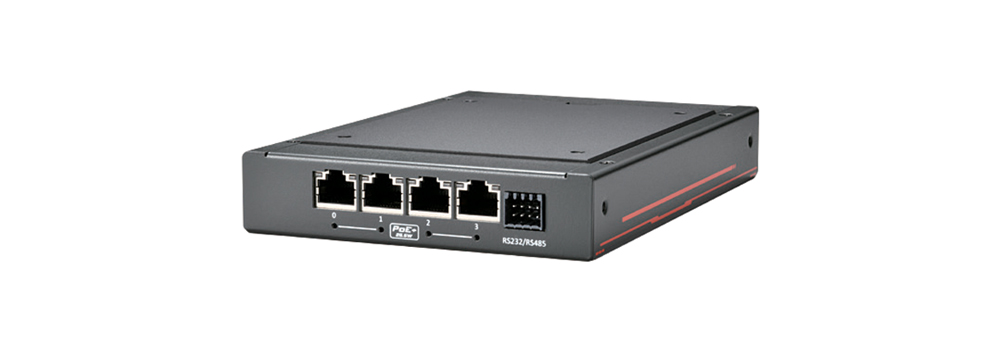NVIDIA Jetson Thermal Design Guide: Unleash Peak AI Performance
NVIDIA Jetson has a long-standing history of supporting industrial applications with advanced edge AI capabilities. These powerful edge AI embedded systems have been integral in various industries, enabling automation, real-time processing, and enhanced operational efficiency since the initial launch of the Jetson Nano in 2019. Five years after the launch of the Jetson Nano, the highly anticipated NVIDIA Jetson Orin system-on-modules, including the Orin Nano, Orin NX, and AGX Orin, are now integrated in a wide range of carrier board and box PC solutions. These advanced modules offer significant enhancements in performance and capabilities, meeting the evolving demands of AI and edge computing applications. The increased performance capabilities of the Jetson Orin modules make them perfect for high-performance AI systems.
Similar to previous models from NVIDIA, these Jetson SOMs are sold without an integrated thermal transfer plate or active fan for cooling. Choosing the right thermal solution for your project hinges on the total power draw from the system-on-module and expected air flow in or around the edge AI system. Our extensive expertise with the NVIDIA Jetson platform has enabled us to develop adaptable thermal solutions for the latest Jetson Orin carrier boards, suitable for a wide range of use cases. As a leading solutions provider, our objective is to thoroughly understand the specific intricacies of your project and recommend the most effective cooling options. To facilitate this process, we have created a comprehensive guide that outlines the fundamental principles of thermal management, ensuring you have the essential knowledge to make informed decisions.
Boost Performance with Jetson Orin NX & Nano Supermode
With the launch of NVIDIA’s latest JetPack 6.1.1 SDK, both the Jetson Orin Nano and Jetson Orin NX can run in Supermode, unlocking an impressive increase in performance and AI throughput. By increasing maximum clock speeds for both CPU and GPU and improved memory bandwidth, edge AI systems integrated with an Orin NX 16GB SOM can now deliver up to 157 TOPS, an indicator of how well AI models perform. This latest software update enables all four Orin Nano and Orin NX models to tackle more complex AI models and real-time processing tasks with greater efficiency. However, this comes at the cost of increased power consumption, with the Orin Nano now featuring a 25W mode and the Orin NX a 40W mode. In order to ensure optimal performance in Supermode, you’ll have to remove extra heat to avoid thermal throttling, where the embedded system would restrict performance to help cool itself down. When choosing a pre-configured Jetson box PC, it’s essential to verify the operating temperature ranges for each power mode it has been tested with to ensure optimal performance and reliability. Since these Jetson Orin modules will predominantly be used in small form factor embedded systems, designing for optimal thermal reliability in Supermode can present additional challenges, which we aim to help you overcome in this guide.
Thermal Solutions for NVIDIA Jetson
When it comes to cooling NVIDIA Jetson modules, there are four primary options to consider: the standard Jetson fan, active heat sinks with integrated fans, passively cooled heat sinks without fans, and heat spreaders, also known as thermal transfer plates, for conduction cooling. Each thermal solution is designed to meet the specific application demands of the Jetson computer, including power draw requirements and environmental operating conditions, ensuring optimal thermal management for your application.
Jetson Fans
When comparing the Jetson fan with alternative COTS fans designed specifically for their proposed carrier board, you may observe slight differences. The active Jetson fan in the development kit attaches to the module using a spring-loaded backing bracket and thermal paste. This design allows the Jetson fan to be utilised by a wide range of carrier boards using the same onboard power connector.
Example carrier board integrated with a standard NVIDIA Jetson fan.
For rugged reliability, the heat sink or heat spreader is best mounted directly to the Jetson carrier board, providing structural support and load relief to the Jetson system-on-module when integrated into an enclosure or embedded system. These thermal solutions should also utilise embedded thermal gap pads to guarantee maximum heat transmission and dispersion, a vital factor for high-performance applications that exploit the Orin modules to their maximum potential.
Example Jetson carrier board with a mounted fanned heatsink for rugged reliability.
Passively Cooled Jetson PCs
A passive heatsink is a cooling solution that uses natural convection to dissipate heat without fans. Typically made from aluminium, a heatsink features fins to maximize surface area and enhance heat transfer to the surrounding air. This fanless design is a standard for most industrial Jetson PCs, offering several benefits in edge computing environments. By eliminating moving parts like fans, these fanless systems are less prone to dust and debris accumulation, ensuring consistent performance even in harsh or dusty industrial environments without the risk of mechanical failure.
Example Jetson Orin Nano/NX fanless PC with passively cooled chassis heatsink.
Actively fanned heatsinks use assisted cooling to actively expel heat when needed, offering more efficient cooling for high-performance applications or embedded systems bound by a compact form factor. These active fanned solutions are particularly suitable for scenarios with higher thermal loads where maximum cooling efficiency is required, such as with the AGX Orin modules which are power configurable requiring up to a 75W draw, or the Orin NX running in Supermode with a 40W draw. Using dynamic fan control, the fan speed onboard the NVIDIA Jetson system can be set to increase as the temperature of the SoC rises. These thresholds are set in the device’s thermal management configuration file. This functionality helps reduce power draw and system maintenance whilst increasing the lifespan of the external fan.
Example Jetson Orin NX box PC with external fan for assisted cooling with maximum performance.
Jetson Heat Spreaders for Conduction Cooling
A Jetson carrier board heat spreader, or thermal transfer plate, is a cooling solution designed to manage and dissipate heat generated by the system-on-module. Its primary role is to evenly distribute heat across a larger surface area, leveraging conduction cooling to maintain consistent thermal performance and prevent overheating. Typically constructed from aluminium for its high thermal conductivity properties, these thermal transfer plates efficiently transfer heat from the system-on-chip to an adjoining structure. When installed in an industrial cabinet or outdoor enclosure, this design effectively dissipates heat to the exterior, preventing heat build-up inside the enclosure and eliminating the need for additional cooling systems, such as fans.
Featuring a solid-state design, heat spreaders are also ideal for shock and vibration resistance as they lack moving parts, such as fans, which are prone to damage or failure under mechanical stress. The rugged construction of the thermal transfer plate ensures it remains securely mounted and maintains consistent thermal performance. This makes it a reliable choice for applications such as onboard vehicles or heavy industrial machinery subjected to constant motion, impacts, or vibrations.
The low-profile, space-saving design of heat spreaders also makes them particularly suited to confined, sealed, and waterproof enclosures, where maintaining an impermeable barrier is crucial. By eliminating the need for perforations or openings required by traditional cooling systems, heat spreaders help preserve the enclosure’s integrity against dust, debris, and other environmental contaminants. This makes a thermal transfer plate an ideal choice for Edge AI applications in harsh outdoor environments, such as smart city infrastructure.
Example rugged AGX Orin carrier board with conduction cooled mounting plate.
Jetson box PCs are also available with integrated flat-top heat spreaders instead of traditional passively cooled heatsinks. Designed for installation inside industrial cabinets, this configuration not only offers a compact, space-saving design with superior thermal performance for confined enclosures but also provides enhanced protection for the embedded system housed within the cabinet.
Example low-profile Jetson PC with flat-top heat spreader for conduction cooling.
Heat Sink vs Heat Spreader: Installing NVIDIA Jetson Inside Enclosures
So, which is the better option for cooling NVIDIA Jetson edge computers inside an industrial cabinet or outdoor enclosure: a heat sink or a heat spreader? A heat sink requires adequate surrounding air or airflow to effectively dissipate heat and prevent excessive build-up. For example, if an NVIDIA Jetson embedded system with either an active or passively cooled heat sink is placed inside a compact enclosure, the heat generated by all components can cause the ambient temperature inside the cabinet to rise, potentially recreating thermal management issues.
An alternative solution is to use conduction cooling, as a heat spreader efficiently transfers heat from the component to the exterior of the chassis or enclosure. Strategic design and material selection are crucial for facilitating effective heat dissipation and ensuring optimal thermal performance. If the enclosure is sufficiently large and temperature build-up is not a concern, a passively cooled heat sink can simplify the installation of the edge AI system inside the cabinet.
With many NVIDIA Jetson embedded systems being deployed outdoors, we have created a separate guide for designing outdoor computer enclosures. This guide applies to both box PC and carrier board solutions housed within industrial cabinets.
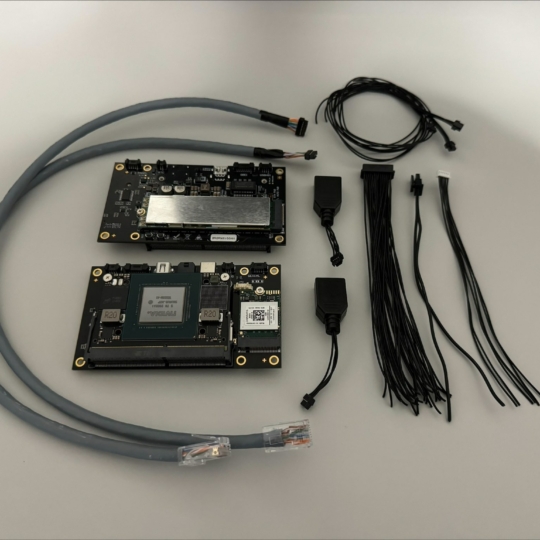
Designing a Battery Powered GPU Computer
Customised for defense and surveillance applications requiring a GPU compute platform for advanced perception, object detection, and tracking capabilities, we upgraded one of our rugged, compact Jetson carrier boards by adding RS-232/422/485 serial control, 3G-SDI video capture, and GPIO control for system sleep or soft shutdown. Using 3D models, we collaborated with the customer to design an IP67 enclosure that seamlessly integrated with the system-on-module using carrier board standoffs and incorporated a thermal transfer pad for efficient heat management.
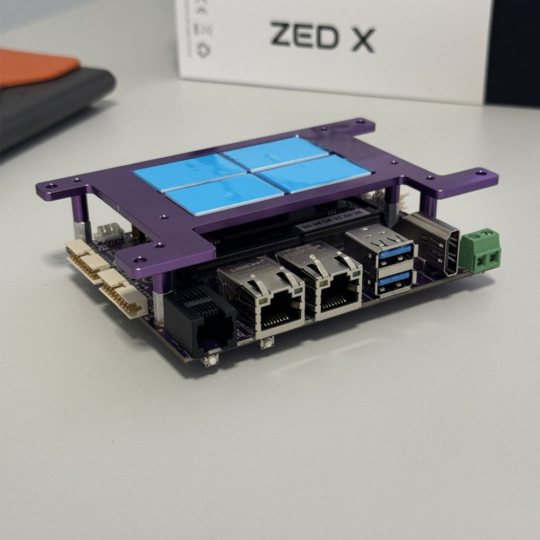
Implementing Edge AI in Roadside Cabinets
Integrated with an 8GB Orin Nano System-on-Module, we reconfigured one of our industrial-grade carrier boards by swapping the GPIO pins with a right-angled latching connector. This design innovation significantly improved ruggedness and reliability for our customer's installation inside road-side trailer cabinets, safeguarding against the challenges of shock and vibration during transportation. We also designed and manufactured a custom heat spreader, engineered to efficiently transfer heat away from the module and outside of the cabinet, ensuring optimal thermal management and long-term performance in austere environments.
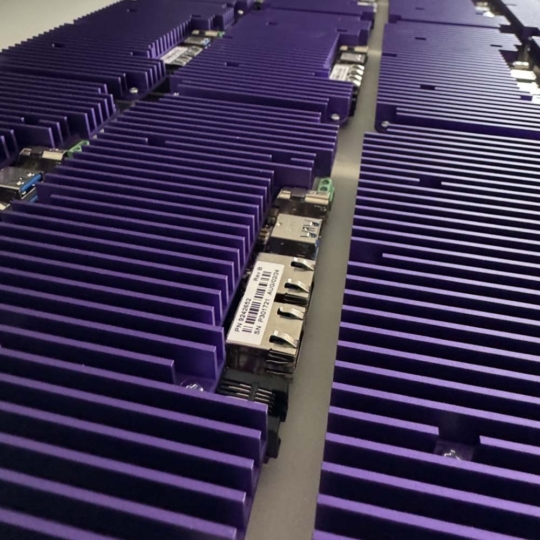
Peak AI Performance with Silent Operation for Digital Artist
AI plays a transformative role in the creation of artwork for a London-based digital artist, pushing the boundaries of creativity and interactivity. Central to the 4K digital creation is the powerful 16GB Orin NX module, which delivers exceptional AI performance to bring the artist's vision to life. To ensure silent operation, we custom-designed a heatsink to effectively dissipate heat under full GPU load without relying on fans. This necessitated a heatsink larger than the carrier board itself, prompting the replacement of vertical pitch I/O with right-angle variants to ensure seamless integration.
Need Help with Your Edge AI Project Deploying NVIDIA Jetson?
Tell us about your application and a member of the team will get right back to you.

